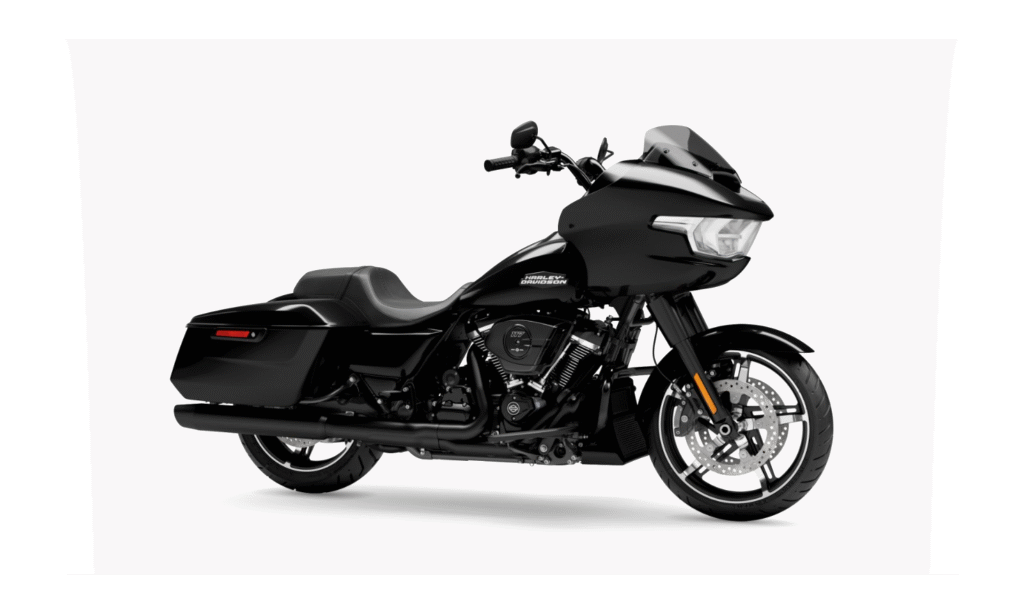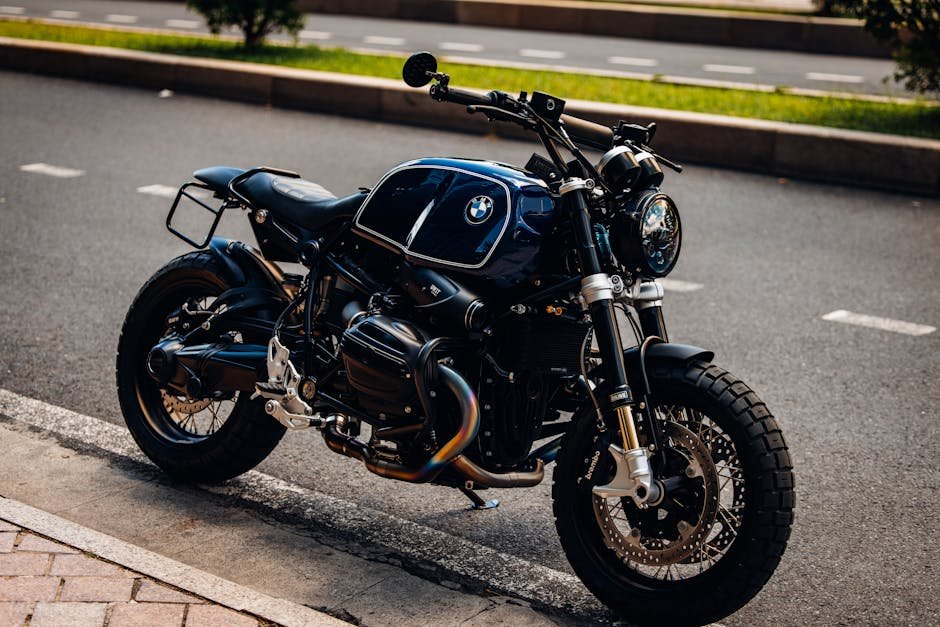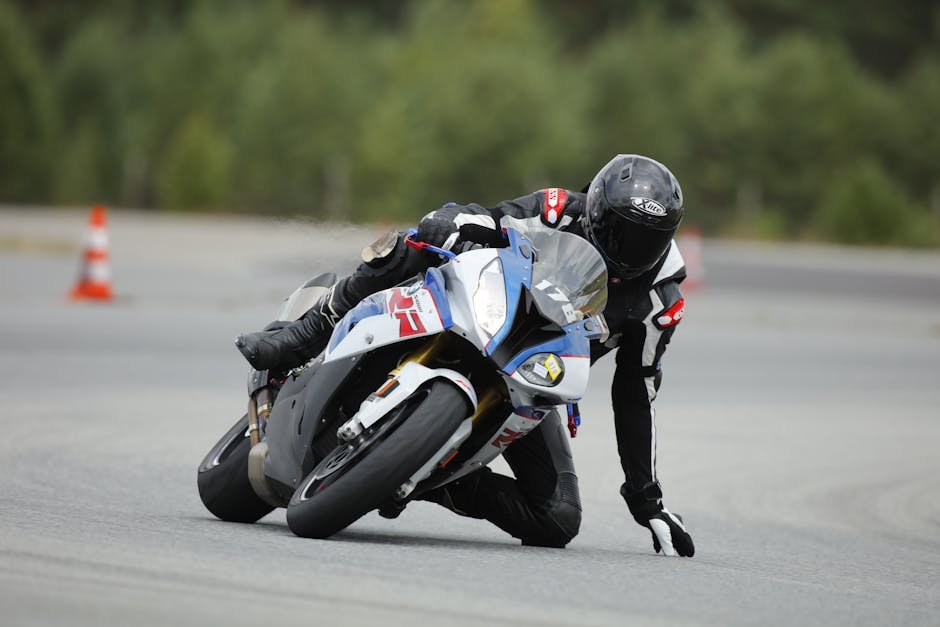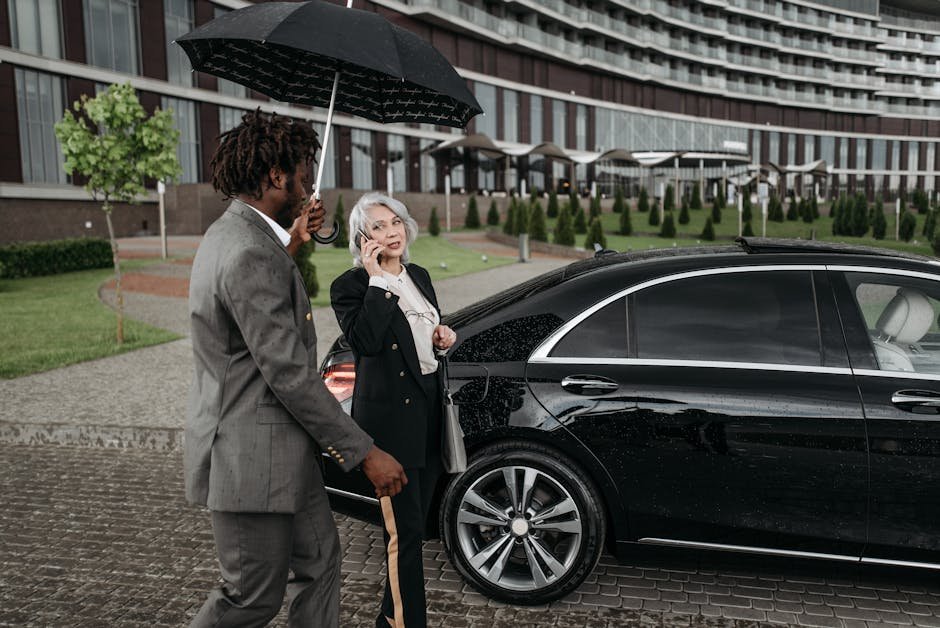Table of Contents
- The Road Glide Special is your choice if you need a classic Harley, plush ride, numerous accessories, and a strong community.
- The Challenger is your choice for more handling precision, higher maximum power, a power-adjustable screen, and modern rider aids baked in.
Engine & Performance
Harley-Davidson Road Glide Special
- Engine: Milwaukee-Eight 114 (1,868cc), air/oil-cooled
- Character: Low-end torque, relaxed revs, variable low-frequency idle noise
- Real world: Adds horsepower on a freight train; shift gears without weight to go with the rhythm
- Heat: Warm air from air-cooled in traffic; back-cylinder idle cut helps on hot days

Indian Challenger
- Engine: PowerPlus 108 (1,768cc), liquid-cooled, SOHC
- Character: Feel smoother idle, revvier top-end; stronger upper midrange and top-gear roll-ons
- Real world: Fastest 50-90mph passes; sportier without losing V-twin rumble
- Heat: Better management in stop-and-go thanks to liquid cooling

Bottom line: Harley traditional muscle vs. modern performance Indian. Take on 2 riders with luggage hard; the Indian is slightly faster at top speed, while the Harley is stronger at the low end.
Chassis, Handling & Brakes
Road Glide Special
- Frame: Steel, engine as stressed member; frame-mounted fairing
- Feel: Ultra-stable on highways and sweepers; deliberate turn-in; plush suspension
- Limits: Earliest floorboard touches (~32° lean); prefers long smooth “slow in, torque out” lines
- Brakes: Strong Brembos with cool highway interventions
Challenger
- Frame: Cast aluminum; frame-mounted fairing; inverted fork
- Feel: Knocked out the s-bends more quickly; the rough canyon pavement got a firmer, more controlled damping
- Limits: More lean angle (up to ~33° right); fewer hard-part touches when pressing on
- Brakes: Strong Brembo setup; sharp initial bite, composed under load
Bottom line: Harley rides like the epitome of highway stability, while Indian gives you a slight sporty vibe round the twisty bit.
Comfort & Long-Distance Ergonomics
Seating & Ergonomics
- Harley: ~26.1 ist geladen, plush bucket feel, mini-ape bar vibe, huge floorboards; very “classic touring” posture.
- Indian: ~26.5 in laden seat, slightly firmer cushion, lower/closer bar reach; neutral, relaxed cockpit.
Wind Protection
- Harley: Classic shark nose with low smoky screen; stylish but more helmet airflow at speed (easy aftermarket upgrade).
- Indian: Windshield Adjustable (power on Dark Horse/Limited); up for quiet bubble, down for airflow—excellent for variable weather.
Ride Quality
- Harley: Marginally “softer” onboard magic-carpet-feel, but sometimes you can bounce on certain bigger bumps as a result of shorter rear travel.
- Indian: A bit firmer but better composed at pace above rough sections; better chassis control in canyons.
Bottom line: Both will happily do 300-mile days. Harley = cushier stock seat/ride; Indian = superior airflow management and high-speed composure.
Tech, Features & Storage
Infotainment
- Harley Boom! Box GTS (~6.5″): nav, audio, Bluetooth, Apple CarPlay (wired).
- Indian RideCommand (7″): nav, audio, Bluetooth, Apple CarPlay; larger, snappy UI.
Rider Aids
- Harley RDRS (option on Special): cornering ABS, linked brakes, traction control, drag-torque slip control, hill-hold.
- Indian Smart Lean Tech: IMU-based cornering ABS/TC; Blind-Spot Detection on Dark Horse/Limited (mirror LEDs).
Bags & Convenience
- Both: roomy locking hard bags, USB power, ~6-gal tanks.
- Range seen: ~40 mpg (Harley), ~37 mpg (Indian) depending on wrist and load—~180–220 miles per fill.
Bottom line: Both are fully modern. Indian edges tech with the bigger screen and blind-spot system; Harley’s interface is simple and time-tested.
Pros & Cons
Road Glide Special — Pros
- Effective torque and nostalgic wind-in-the-face feeling
- Highway comfort with plush ride; high way benefit of vast choices
- In wind and overtaking trucks, rock-steady
Road Glide Special — Cons
- Warm air in traffic!
- Earliest earboard touch; Less lean angle clearance
- Stock low screen = less helmet airflow
Challenger — Pros
- Revvy response; higher power peak
- Blind-spot monitoring (on some trims); power-adjustable screen
- Rides sharper with firmer, controlled suspension
Challenger — Cons
- The ride was firmer, showing expansion joints
- The bars are slightly narrower, which can make the clutch feel more abrupt at times
- Join a smaller dealer network vs Harley (varies by region)
Side-by-Side Spec Snapshot (from our test units)
| Item | Road Glide Special | Indian Challenger |
|---|---|---|
| Engine | Milwaukee-Eight 114, 1,868cc, air/oil | PowerPlus 108, 1,768cc, liquid |
| Output feel | ~90 hp / 119 lb-ft (est. dyno); huge low-end | ~122 hp / 128 lb-ft (claimed); stronger up top |
| Wet weight | ~820 lb | ~805 lb |
| Suspension feel | Plush, relaxed | Firmer, more composed at pace |
| Lean clearance | ~32° | ~31–33° (side-dependent) |
| Screen | Low fixed | Power adjustable (model-dependent) |
| Aids | RDRS (option) | Smart Lean + Blind-Spot (trim-dependent) |
| Range (observed) | ~40 mpg | ~37 mpg |
(Specs reflect the article’s narrative; verify locally for options and trims.)
Verdict: Which Bagger Is Best for You?
- Select Harley Road Glide Special if you need classic style, awesome torque, luxurious comfort, and huge customization options with immense community support.
- Choose Indian Challenger if you covet sharper handling, more peak power, an adjustable windshield, and the latest aids right from the start.
It’s impossible to take a wrong step. Attempt both of them. Your heart and the local highways will make the decision.
FAQs
Which is the quicker in realistic roll-ons?
The Challenger is quicker from 50 to 90 mph because of the revvier top-end and it has higher peak power. The Harley has countered with a low-rpm grunt that is stronger for easy starts and lazy passing with a downshift.
Which is more comfortable for long-distance interstate rides?
Both bikes are equally skilled. The softer Harley suspension and cushy saddle are great on long, straight highways. The Indian’s adjustable screen and improved wind management make for a quieter cockpit and its damping keeps it composed on bumpy roads.
Do they both have modern safety electronics?
Certainly. They both come with cornering ABS and traction control as standard. Harley’s RDRS adds a hill-hold feature and drag-torque slip control; the Indian adds Smart Lean and, on some trims, Blind-Spot Detection, which is a top touring aid.
Helpful Links
- Harley-Davidson Road Glide Special (model family): https://www.harley-davidson.com
- Indian Challenger (model family): https://www.indianmotorcycle.com




